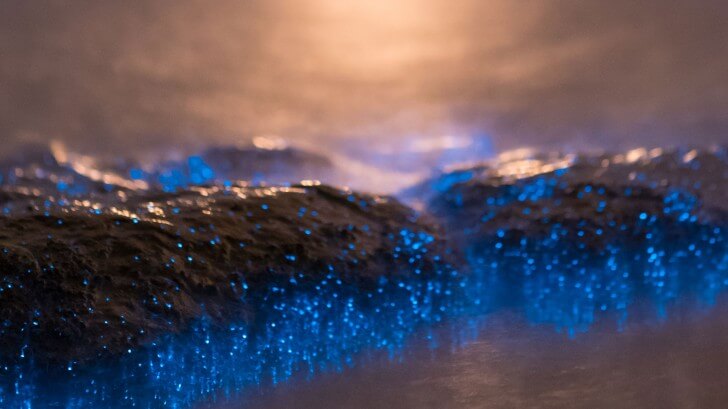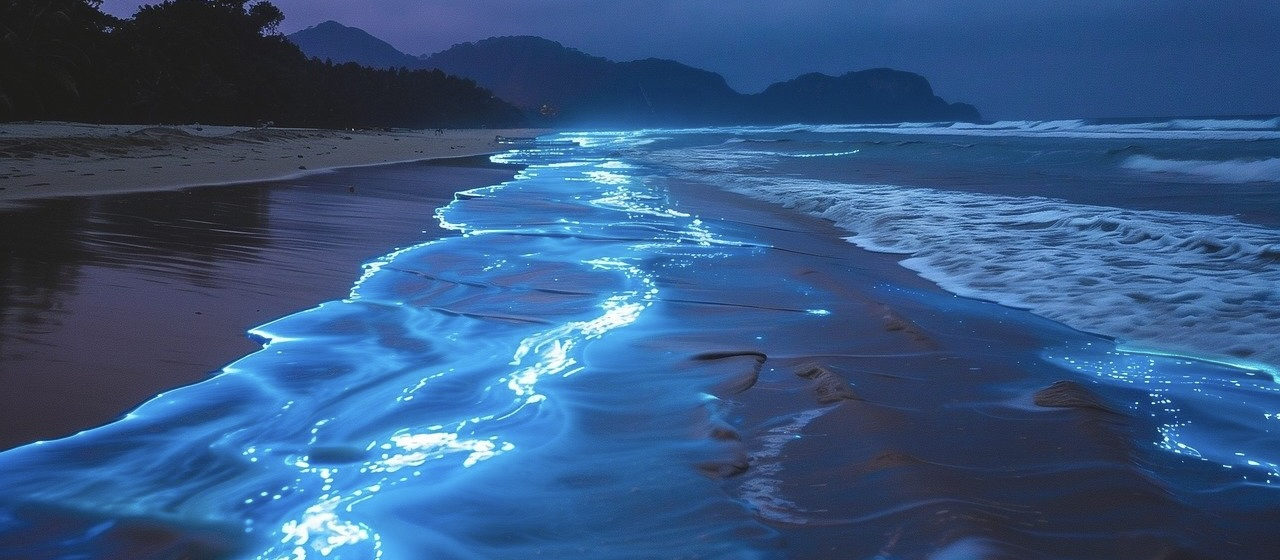The Mysterious Milky Sea Phenomenon: A Glimpse into Nature’s Ghostly Light

Image Credit: The Mystery of Milky Seas | Office for Science and Society
Imagine sailing through an ocean that glows faintly blue, as if the sea itself has come alive with an otherworldly light. This is the Milky Sea phenomenon, a rare and mesmerizing natural event where vast stretches of seawater emit a soft, continuous glow. For centuries, sailors have reported these eerie, glowing waters, often describing them as sailing through a sea of milk. Even from space, satellites have captured the faint glow of these mysterious seas, which can stretch over 100,000 square kilometers. But what causes this ghostly light? The answer lies in the tiniest of creatures: bioluminescent bacteria.
A Journey Through History: Tales of the Glowing Seas
The Milky Sea phenomenon has been documented for centuries, with some of the earliest accounts coming from sailors who were both amazed and terrified by the glowing waters. In 1864, the crew of the Confederate warship CSS Alabama encountered a vast, glowing patch of ocean off the coast of Africa. Captain Raphael Semmes described the scene as ‘a phantom sea,’ with the ship appearing to sail through a surreal, milky light. Similarly, in 1995, the crew of the merchant ship SS Lima reported sailing through a glowing sea that stretched from horizon to horizon, likening it to sailing over a field of snow. These historical accounts, while poetic, have only recently been backed by scientific evidence.
The Science Behind the Glow: Bioluminescent Bacteria
The glow of the Milky Sea is caused by a type of bacteria called Vibrio harveyi. These tiny organisms emit light through a process known as bioluminescence, which occurs when the bacteria reach high concentrations in the water. This phenomenon is triggered by a process called quorum sensing, where the bacteria communicate chemically and begin to glow collectively when their numbers are sufficient. Often, this occurs after an algal bloom, when the bacteria feed on the decaying algae and multiply rapidly. Unlike the flashing lights of bioluminescent algae, the glow of the Milky Sea is steady and continuous, creating an otherworldly effect.

Image Credit: The Mystery of the Milky Sea | BBC Earth
Mapping the Milky Seas: From Sailors to Satellites
For years, the Milky Sea phenomenon remained a mystery, with most sightings relying on anecdotal reports from sailors. However, in 2005, scientists captured the first photographic evidence of a Milky Sea using satellite technology. The Day-Night Band sensor, a low-light imaging tool on satellites, has since allowed researchers to track and study these glowing seas more accurately. One notable event, detected in 2019 near Java, lasted for over 40 days and covered an area the size of Kentucky. This breakthrough has given scientists a better understanding of where and why these phenomena occur, with most sightings concentrated in the northwestern Indian Ocean and around Indonesia.
Cultural Connections: Myths and Literature
The Milky Sea phenomenon has long captured the human imagination, inspiring myths, legends, and even works of literature. In Somali culture, the glowing seas are referred to as ‘Kaluunka Iftiima,’ meaning glowing sea creatures. Jules Verne’s classic novel Twenty Thousand Leagues Under the Sea describes a scene where the submarine Nautilus sails through a ‘milky sea,’ attributing the glow to ‘myriads of luminous infusoria.’ These cultural interpretations reflect the awe and mystery that the Milky Sea has evoked throughout history.
Ecological Importance: A Delicate Balance
Bioluminescence plays a crucial role in marine ecosystems, aiding in communication, predator evasion, and even reproduction. However, the delicate balance that allows these glowing bacteria to thrive is under threat. Pollution, climate change, and deep-sea mining could disrupt the conditions necessary for bioluminescent organisms to survive. Protecting these unique ecosystems is not just about preserving a natural wonder; it’s about safeguarding the intricate web of life that depends on bioluminescence.
Unanswered Questions: The Mysteries That Remain
Despite advancements in technology, many questions about the Milky Sea phenomenon remain unanswered. Why do these glowing events occur in specific regions? What role do ocean currents and temperature play in their formation? And what other secrets do these glowing bacteria hold? As scientists continue to study this fascinating phenomenon, the Milky Sea serves as a reminder of how much we still have to learn about the natural world.
Interesting Facts: Did You Know?
- The Milky Sea phenomenon can cover an area of up to 100,000 square kilometers, making it visible from space.
- Over 235 sightings of milky seas were documented between 1915 and 1993.
- The glow is caused by Vibrio harveyi bacteria, which emit light through quorum sensing.
- The first photographic evidence of a Milky Sea was captured in 2005 using satellite technology.
- In Somali culture, the phenomenon is called ‘Kaluunka Iftiima,’ meaning glowing sea creatures.
The Milky Sea in Popular Culture: From Folklore to Modern Media
The Milky Sea phenomenon has inspired countless stories, from ancient folklore to modern documentaries. Its mysterious glow has been portrayed as everything from a divine omen to a scientific curiosity. Whether seen as a natural marvel or a supernatural event, the Milky Sea continues to captivate our imagination, reminding us of the beauty and mystery of the world’s oceans.
Conclusion: A Glimpse into the Unknown
The Milky Sea phenomenon is a testament to the wonders of the natural world, blending science, history, and culture into a single, mesmerizing event. As we continue to explore and understand this glowing mystery, we are reminded of the delicate balance that sustains life in our oceans—and the importance of protecting it for future generations.
References:
The Mystery of Milky Seas | Office for Science and Society – link
The Mystery of the Milky Sea | BBC Earth – link
Milky Sea’ Phenomenon Captured in Photo for First Time – Newsweek – link
Categories: Do you know, Mystery, Nature, Science
Tags: Bioluminescence, Marine Biology, Milky Sea, Natural Phenomena, ocean mysteries
Country of Origin: Indonesia, Somalia, World
Topic: Milky Sea Phenomenon



